
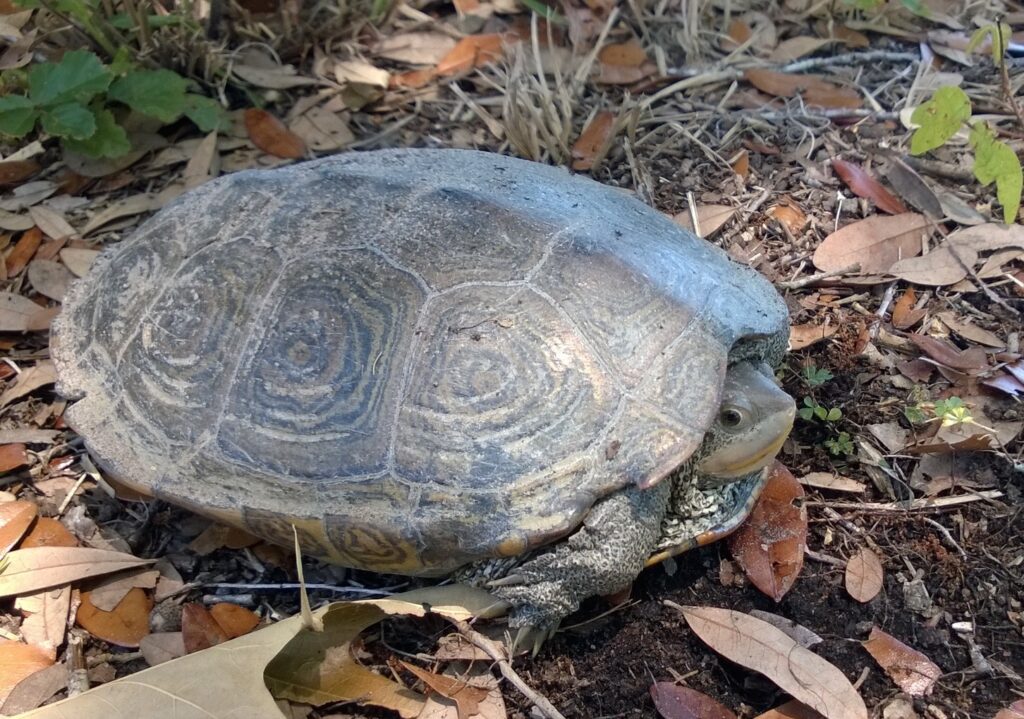
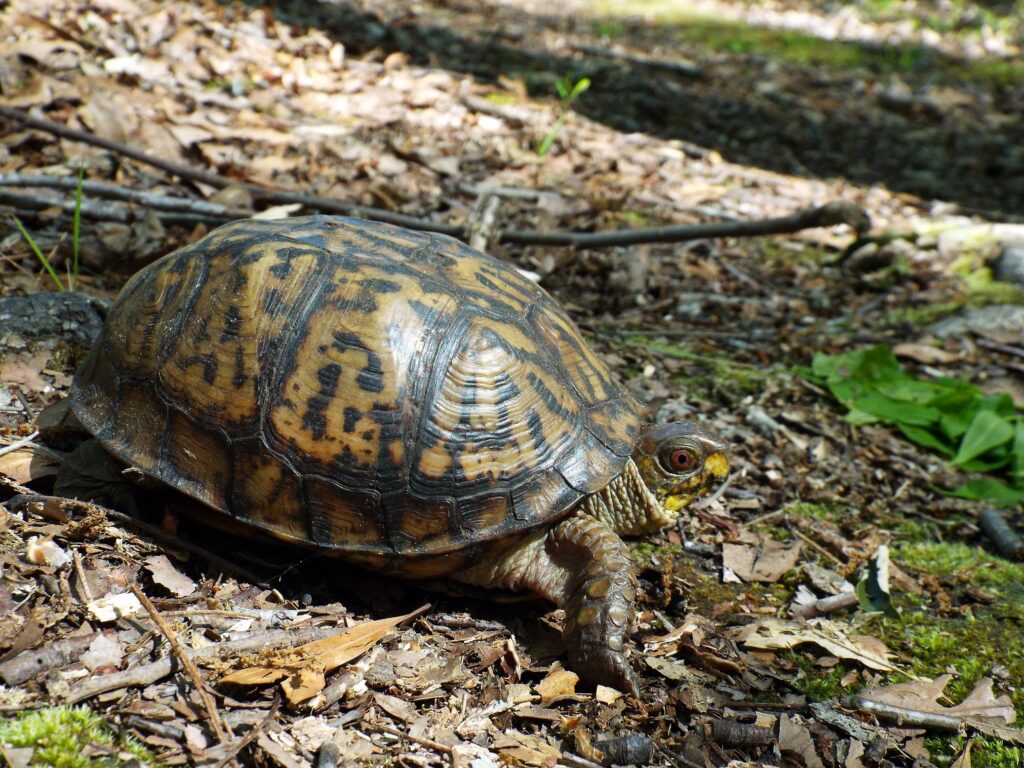
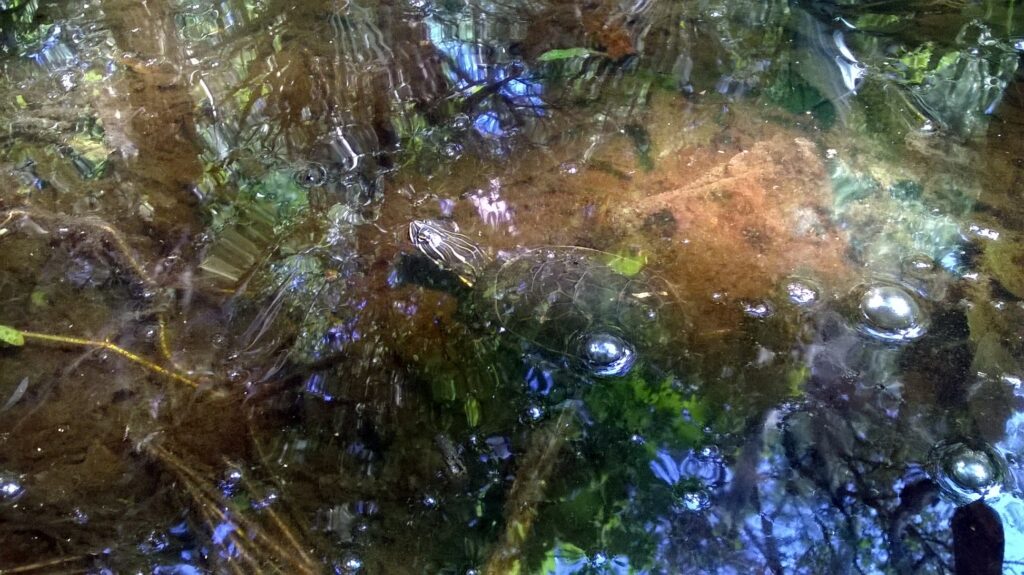
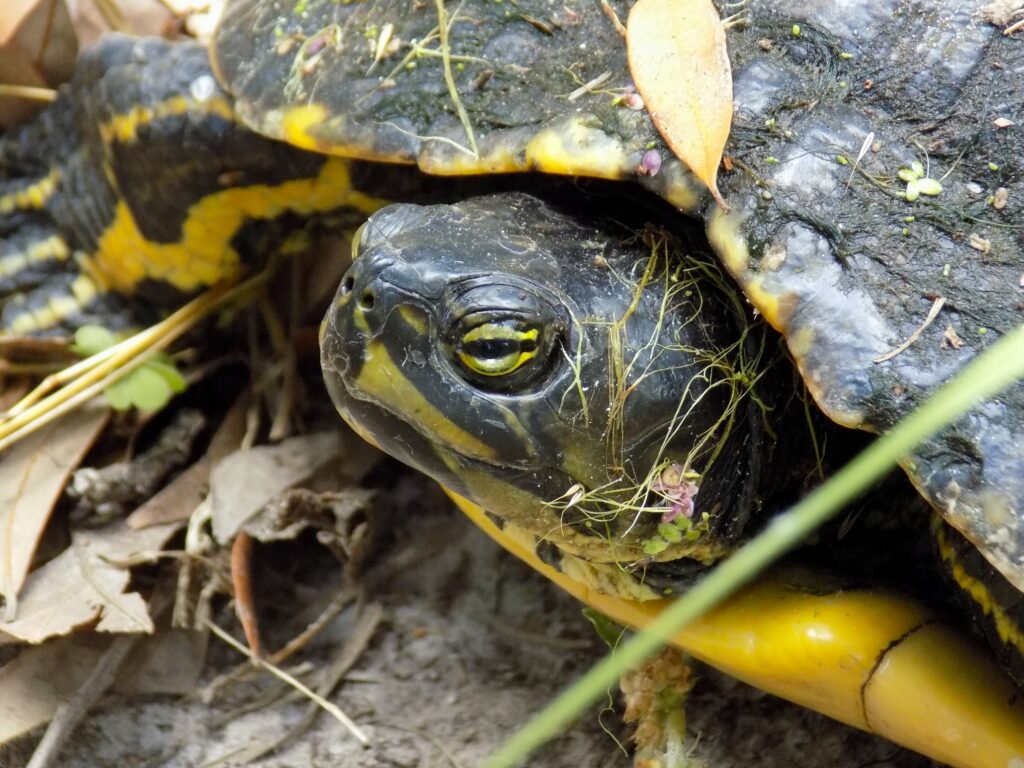
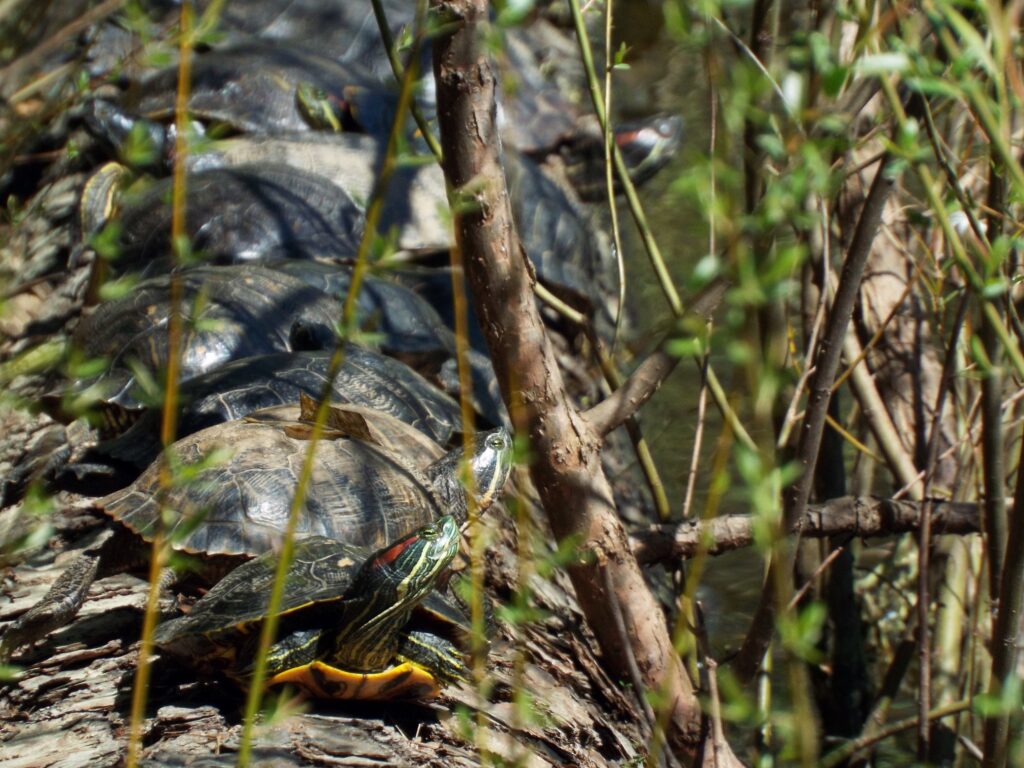
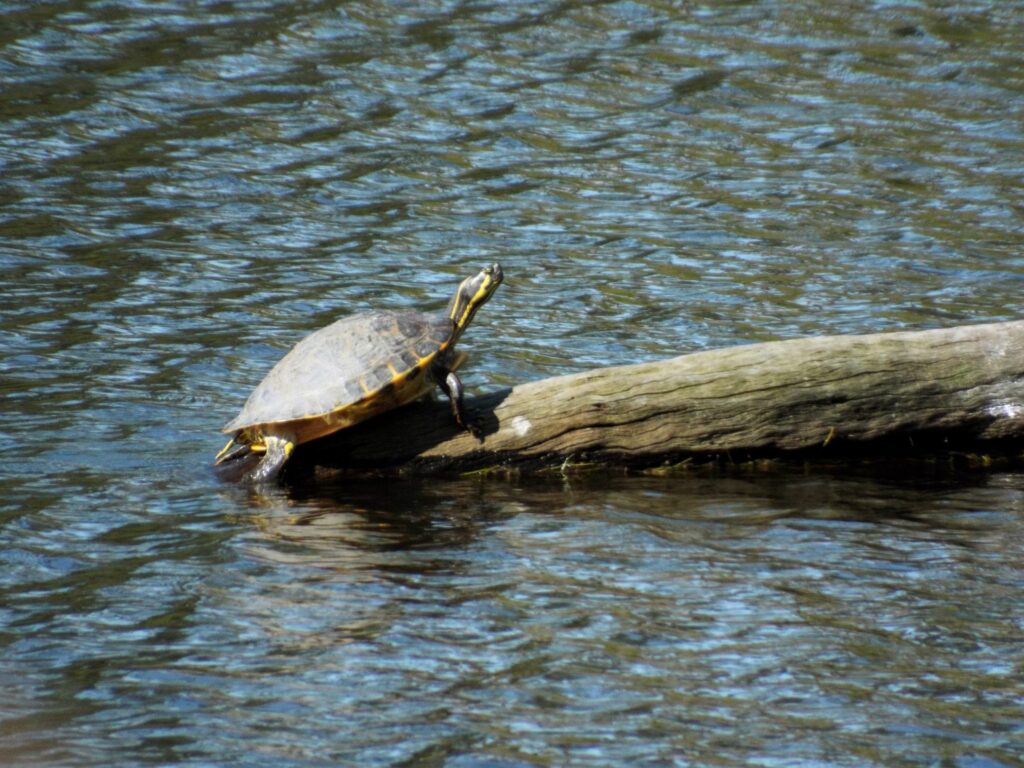
Since I missed a week due to the Hurricane, this week for Flora and Fauna Friday I’ll talk about my favorite group of animals: Pond Turtles (family Emydidae).The Pond Turtles are a diverse family of turtles. We have six species in the coastal plain of South Carolina: the Diamondback Terrapin, Eastern Box Turtle, Chicken Turtle, Southern Slider, River Cooter, and Spotted Turtle. They’re typically flat bodied turtles with a ridge running along the back of their shell. However, this group has quite the variability in body shape and these traits aren’t always apparent. They’re all omnivorous and partially aquatic.
The Diamondback Terrapin stands out from the rest of our Pond Turtles, both in appearance and ecology. The individual scutes of their carapace, or top of the shell, have many concentric circles, their skin is a bluish-white with small black spots, and their beak is edged with yellow. They can live in freshwater, brackish, or saltwater where they hunt for small fish and crustaceans in the marshes and estuaries.
The Eastern Box Turtle, just like the Diamondback Terrapin, stands out from other Pond Turtles in both appearance and ecology. These turtles have high domed shells and a double hinged plastron, or lower half of the shell. This allows them to fully retract their bodies within their shells, leaving nothing exposed to danger. This is where they get the name of “Box” turtle from. These turtles are primarily terrestrial and can be found in almost any woodland habitat but they won’t hesitate to forage in a shallow wetland for small fruits, invertebrates, and amphibians. Females are typically a drab shade of tan or dark gray. Males are beautifully patterned in yellows, oranges, and reds. No two turtles are marked the same. Both males and females have red eyes, but males have a white base color to their iris which can make it appear a shade of pink.The Chicken Turtle gets its name because it’s said to taste like chicken, but so do a lot of things apparently. They’re a fairly small Pond Turtle with a yellow plastron, flat shell, a net-like pattern on the carapace, and a very long neck. That long neck is great for grabbing small fish, crayfish, or the fingers of un-careful herpetologists. They live in shallow, vegetated wetlands where they hunt for small animals.
The Southern Slider is our most common Pond Turtle. When you think of an aquatic turtle, this is probably the species that comes to mind. They’re also the most common turtle sold as pets. They are a fairly large turtle that can reach over a foot in length. They usually have a yellow underside and dark back. They exist anywhere there is permanent standing water. That includes lakes, slow moving rivers, Carolina Bays, and parking lot retention ponds. They will eat anything they can catch as well as aquatic plants. The Southern Slider has two subspecies in South Carolina: the Yellow-bellied Slider and the Red-eared Slider. The Red-eared Slider is native to the Mississippi River basin but has been spread extensively due to the pet trade. They’re more common in the upstate and around human development. They are easily identified by their namesake “red ear” but this can fade with age. The Yellow-bellied Slider is our native subspecies. They are best identified by their yellow “sideburns”. This is a thick, yellow, vertical band just behind the eye. Males are smaller than females and have long claws that they use to court females. During courtship the male will swim backwards in front of a female while rattling his claws in her face. (How romantic.)
The River Cooter is very similar in appearance to the Southern Slider. It’s a large aquatic turtle with a dark back and yellow underside. However, Cooters differ in habitat from Sliders. They prefer open water with some degree of flow. They are best adapted to life in large river as their flatter shell allows them to better fight the current. They are primarily herbivorous but won’t shy away from an easy meal.
The Spotted Turtle is a small, flat, black Pond Turtle covered in sparse yellow dots. They live in backwaters, blackwater swamps, bottomland hardwood forests, Carolina Bays, and even ditches. They are mainly carnivorous. They’re a federally endangered species. The primary reason for this is habitat degradation and a low reproductive output. I’ve only seen a couple myself so I don’t have any photos on hand to share.